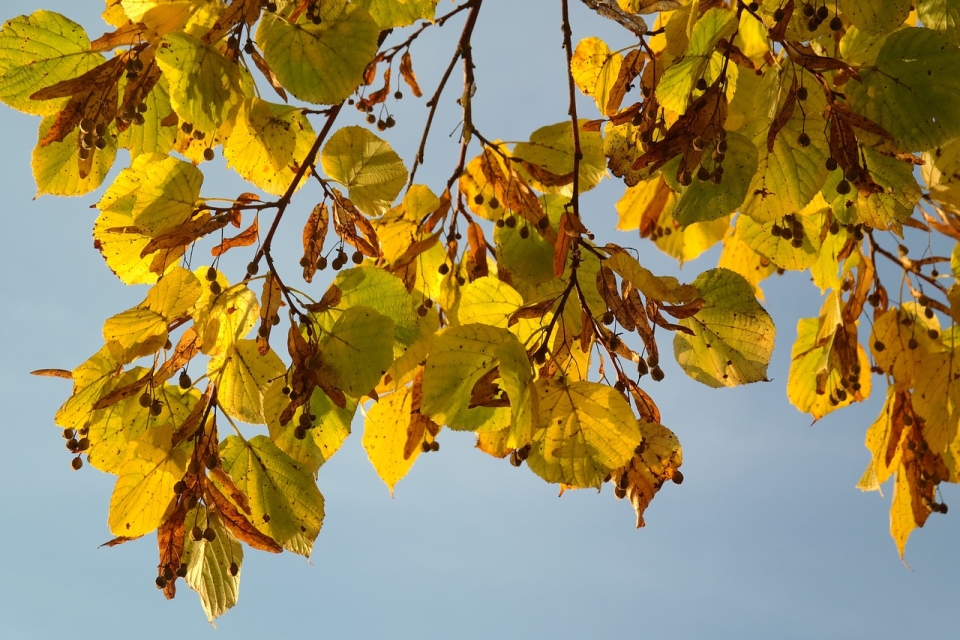Small- leaved lime

Source: Pixabay
Large- leaved lime

Source: Pixabay
If we look at the underside of the leaf, both species have tufts of hairs in the axils of the veins. In small-leaved lime, these hairs are brown, while in the large-leaved lime, they are white. Above the sepals, small-leaved lime has clusters of 5 to 15 flowers, while the large-leaved lime has 3 flowers in a cluster. The flower clusters of small-leaved lime are arranged in all directions, while those of the large-leaved lime hang down. The two species also differ in their blooming period. The large-leaved lime starts blooming one or two weeks earlier than the small-leaved lime.
In the autumn, the fruits of the small-leaved lime can be crushed between the fingers, while those of the large-leaved lime cannot, because their shell is heavily lignified.
The village tree, typical of Slovenian villages, is usually the large- leaved lime tree. In contrast to the lerge- leaved lime, the small-leaved lime is found in the forest. It is relatively rare, but a valued forest tree.
DO YOU KNOW?
- The large- leaved lime tree has long been considered a symbol of Slovenian identity. Folk tradition says that large- leaved limes were often planted on special occasions. They were usually planted near churches and other landmarks. Often, a large- leaved lime was planted in the center of the village, where the village elders would gather and converse.
- One of the most famous representatives of small-leaved limes is the 25-meter-high and 500-year-old Gogal's small-leaved lime, which stands in front of the Gogal homestead in Zgornja Radovna. The tree is protected as a natural monument of national importance.
Thank you.

